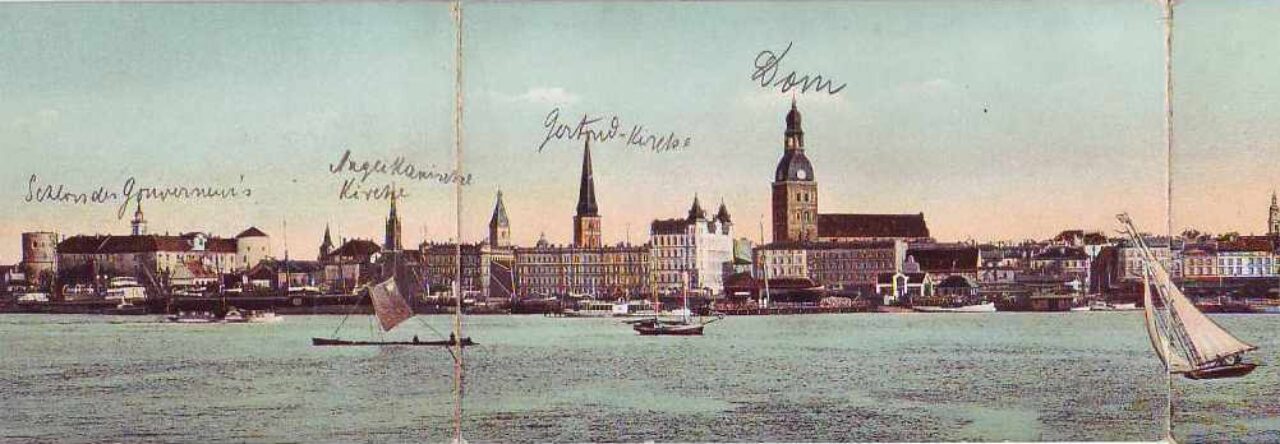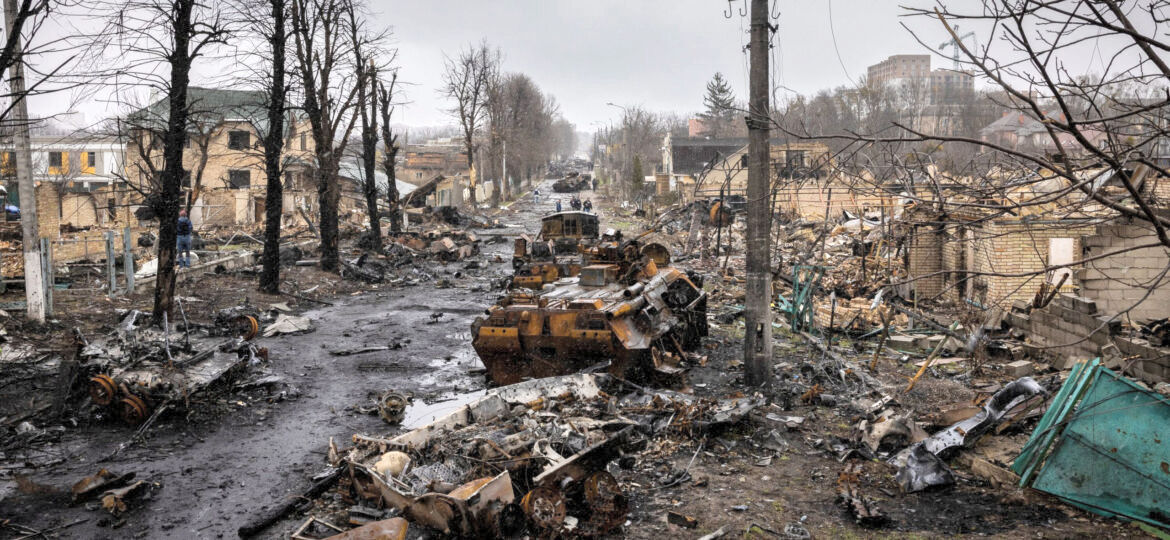As Putin threatens Ukraine with tactical nuclear weapons in the wake of explosions on the Kerch Straits bridge, talk of “off ramps” has once again taken root in the media and public discourse. The only “off ramp” is Russian withdrawal and reparations to fully rebuild Ukraine.
This account of horrors inflicted in Odesa a century ago proves barbaric horrors are not new to either the Kremlin as perpetrator or the Ukrainians as victims. The West must insure, this time, that the Kremlin can never inflict such destruction again.
We have reproduced the full article.
HORRORS OF BOLSHEVISM.
EYE-WITNESS’S ACCOUNT.
REIGN OF TORTURE AT ODESSA.
MURDER, BESTIALITY AND RAPE.
(By the Rev. R. Courtier-Forster).
(Late British Chaplain at Odessa and the Russian Ports of the Black Sea. In the *Times).
Do English people really imagine that the published accounts of the appalling atrocities and brutal tyranny of the Bolshevik rule in Russia are an exaggeration?
Before God I wish I could believe they are not true to the actual facts. Could I but find them untrue. I would speak for the Bolsheviks from end to end of England, for I have always done what lay in my power to alleviate the conditions of life of the manual workers and to raise the standard of living and the opportunities for personal development under which they live.
Unhappily, I have spent nearly a year in Soviet Russia, and was in the hapless country over seven years before that. I have read and re-read the letter from a British officer to his wife respecting the unspeakable horror of the brutalities practised by the Bolsheviks on their martyred victims and can find nothing which my own experience tells me is probably inaccurate.
Odessa an Inferno.
While I was still British chaplain of Odessa the city was deluged with blood. When the Bolshevik elements, grafting on to their main support the 4,000 criminals released from the city gaols, attempted to seize the town, people of education, regardless of social position, offered what armed resistance was in their power. Workmen, shop assistants, soldiers, professional men, and a handful of officers fought for freedom and liberty through the streets of the great port for three days and nights against the bloody despotism of the Bolsheviks. Tram cars were overturned to make barricades, trenches dug in the streets, machine-guns placed in the upper windows of houses to mow the thoroughfares with fire. The place became an inferno. The Bolsheviks were victorious. On capturing Odessa Railway Station, which had been defended by a few officers and a number of anti-Bolshevik soldiers, the Bolsheviks bayoneted to death the 19 wounded and helpless men laid on the waitingroom floor to await Red Cross succour.
Scores of other men who fell wounded in the streets also became victims to the triumphant Bolshevik criminals. The majority of these wretched and unhappy sufferers completely disappeared. Inquiries at the hospitals and prisons revealed the fact that they were not there, and no trace of them was to be found. A fortnight later there was a terrible storm on the Black Sea, and the bodies of the missing men were washed up on the rocks of Odessa breakwater and along the shore: they had been taken out to sea in small boats, stones tied to their feet, and then been dropped over alive into deep water. Hundreds of others were captured and taken on board the Almaz and the Sinope, the largest cruiser of the Black Sea Fleet. Here they became victims of unthinkable tortures.
Victims Roasted Alive.
On the Sinope, General Chormichoff and some other personal friends of my own were fastened one by one with iron chains to planks of wood and pushed slowly, inch by inch, into the ships’ furnaces and roasted alive. Others were tied to winches, the winches turned until the men were torn in two alive. Others were taken to the boilers and scalded with boiling steam: they were then moved to another part of the ship and ventilating fans set revolving that currents of cold air might blow on the scalds and increase the agony of the torture. The full names of 17 of the Sinope victims were given me in writing by members of their families or their personal friends. These were lost later when my rooms were raided, my papers seized, and I myself arrested and thrown into prison.
The house in the Catherine Square in which I was first in captivity afterwards became the Bolsheviks’ House of Torture in which hundreds of victims were done to death. The shrieks of the people being tortured to death or having splinters of wood driven under the quick of their nails were so agonizing and appalling that personal friends of my own living more than a hundred yards away in the Vorontsoffsky Pereulok were obliged to fasten their double windows to prevent the cries of anguish penetrating into the house. The horror and fear of the surviving citizens was so great that the Bolsheviks kept motor lorries thundering up and down the street to drown the awful screams of agony wrung from their dying victims.
This House of Torture remains as much as possible in the condition in which the Bolsheviks left it and is now shown to those who care to inspect its gruesome and blood-bespattered rooms.
There are people who maintain that, with theatres open and electric trams running, anarchy does not exist, and that life in Soviet Russia is both secure and pleasant. I did not find it so. There is a halting place for the electric cars at the corner of Kanatnaya and Grecheskaya. Returning from the town at 11.30 one morning I encountered a scared and frightened group at this point. Inquiry revealed the fact that the Bolshevists had just successfully murdered two unprotected and defenceless women waiting for the tram, to go into the city shopping. Their crime was that both clothes and manners showed them to be “Bourjouie”. Also in the Kanatnaya one morning a working woman was shot for the sport of the thing while running across the road to purchase a bottle of milk for her children. Her body was lying by the kerb as I came by, the bottle smashed, and milk and blood streaming down the gutter. The house door stood open, her two little children crying with grief and terror at the entrance.
Treatment of Women.
Week by week the newspapers published articles for and against the nationalization of women. In South Russia the proposal did not become a legal measure, but in Odessa bands of Bolsheviks seized women and girls and carried them off to the Port, the timber yards, and the Alexandrovsky Park for their own purposes. Women used in this way were found in the mornings either dead or mad or in a dying condition. Those found still alive were shot. One of the most awful of my own personal experiences of the New Civilization was hearing at night from my bed-room windows the frantic shrieks of women being raped to death in the park opposite. Screams of shrill terror and despair repeated at intervals until they became nothing but hoarse cries of agony like the death calls of a dying animal. This happened not once, or twice, but many times. Never to the day of my death shall I forget the horror of those dreadful shrieks of tortured women, and one’s own utter powerlessness to aid the victims or punish the Bolshevik devils in their bestial orgies.
To be decently clothed and washed was a crime in the eyes of the Bolshevik proletariat. Both men and women were stopped in the streets of Odessa, robbed of their boots, stripped of their clothes, and sent home naked through the frost and snow. So many hundreds of people were treated in this manner under the Soviet rule, that the satirical paper of South Russia, the Scourge, brought out a fullpage cartoon representing one of the chief streets of the city, with a naked man and woman departing hand in hand up the road while a group of unkempt Bolsheviks with men’s trousers and women’s underclothes fluttering on their arms were seen running in the opposite direction. Beneath was the satirical observation, “In Odessa the World finds Paradise anew”. For this reflection on the glorious new civilization of the Soviets, the windows of the Scourge offices were smashed and the paper fined.
Martyrdom of Christians.
It was the martyrdom of the two Metropolitans and the assassination of so many Bishops and the killing of hundreds of various Christian ministers of religion, regardless of denomination or school of thought, that proved the undoing of the Scourge. Russian Orthodox clergy, Protestant Lutheran pastors. Roman Catholic priests, were tortured and done to death with the same light-hearted indiscrimination in the name of Toleration and Freedom. Then it was that the Scourge, seeing the last remnants of Liberty ground under the heel of a tyranny more brutal in its methods than a medieval torture chamber, published another fullpage cartoon representing Moses descending from the Burning Mount bringing in his arms the Tables of the Ten Commandments to Humanity and being stoned to death by a mob of workmen’s and soldiers’ delegates.
The following Sunday afternoon I was passing through the Town Gardens, when I saw a group of Bolshevik soldiers insulting an Ikon of the Thorn-crowned Face of Christ. The owner of the Ikon was spitting in the pictured Face, while the others were standing round watching with loud guffaws of laughter. Presently they tore the sacred picture into fragments, danced on it, and trampled and stamped the pieces into the mud.
By this time the devastating corruption of the Holy Revolution had so spread that I saw open acts of indecency being committed in broad daylight in the parks and public gardens. These are but a few experiences from the mass of events crowded into my life in Soviet Russia. In England numbers of people are incapable of believing the ghastly conditions to which Bolshevism has reduced Russia, but those of us who have lived in the country for many years and seen the abominable Bolshevik system bearing fruit, know the absolute truth of these things.
The men at home who are deliberately duping and deceiving our trade unions and manual workers as to the true conditions of practical Bolshevism are not only committing a crime against democracy, but an outrage on humanity.


